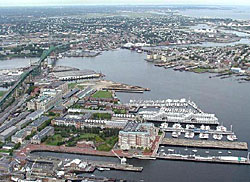
North Shore
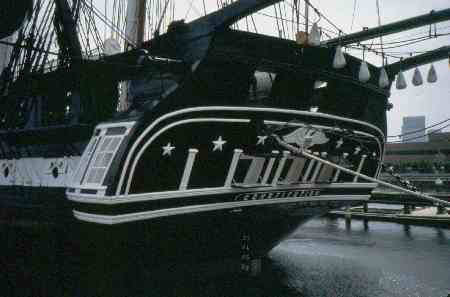
| Route 66 | Cities | Beaches |
 |
North Shore |
 |
The North Shore is really the northern extension of the Freedom Trail. During our day hiking the southern phase of the trail, we picked it up as it came off the Charlestown Bridge. Today, we start at the same point, but follow the clearly marked trail across the Charlestown Bridge and turn right. There are three north Shore visitor sights : The USS Constitution, The Charlestown Navy Yard and Bunker Hill. To see all three will only require half a day. We do, however, recommend an early start. The USS Constitution draws huge crowds, and unless you're there as it opens, you may have an hour or so wait in line. We recommend about an hour on the Constitution, and about half an hour each at Bunker Hill and the Naval Yards. |
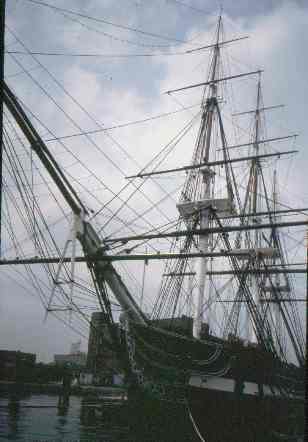 |
You should stop at the National Park Visitor Center first. There are maps to pick up; books, film and other items to buy; and displays to clarify what you're about to see. Halfway between the Visitor Center and the Constitution, there is a most interesting marker. This is where Paul Revere came ashore when two Sons of Liberty rowed him across the Charles River in their dory the night of April 18. He was given a horse by Deacon John Larkin and set off through Charlestown, where a British sentry tried to stop him. Revere, the better horseman, outrode him and set off toward Lexington. There are other things to see here : the USS Cassin Young, a World War II destroyer; the Commandant's House, the ropewalk, and the museum. Then it's time for the great ship. |
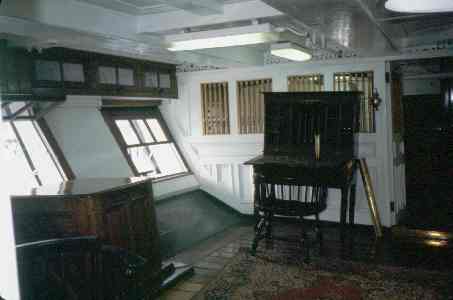 |
The Constitution is the oldest conrtinuously commissioned sailing vessel in the world. It has won more battles than any other ship anywhere and still sails on the open ocean regularly. It is still a fully operational U.S. Naval vessel. During its first battle the Constitution acquired the nickname of "Old Ironsides" because British cannonballs bounced harmlessly off its thick oak hull. Britain was beginning to run out of forest by then, and their smaller trees had neither the thickness or the hardness of the much larger American oaks. This became a major factor in America's naval supremecy, which took the British quite by surprise. | 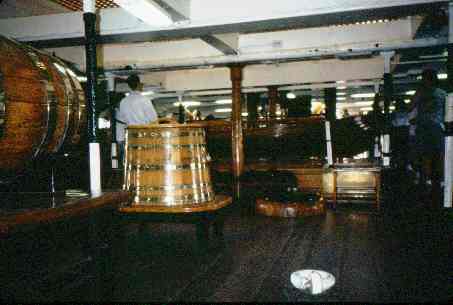 |
| The Captain's quarters (above left) were fairly plush, but the men slept in hammocks on one huge deck, hundreds of them swaying with the ship's movement. During the day they hung their hammocks and belongings from duffel bags which attached to hooks in the ceiling. The Captain and his officers were served meals in a smaller room, while the crew went through a cafeteria line (above right), which included a large dispenser (with the metal rings around it) for their daily allotment of ale. You can tour the kitchen, which was surprisingly well equipped for the time. | 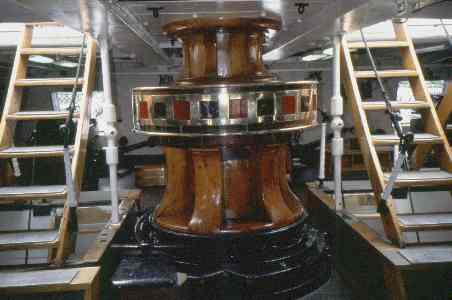 |
At left here is the Capstan. This brings up the anchor. When they're away from the dock, the two staircases are pulled up into the ceiling. The men place a square butted pole into each of the holes around the capstan, then push round and round to raise the anchor. The capstan was designed for 20 men. Less than that can still raise the anchor but it takes longer. |
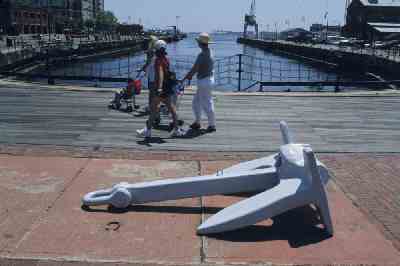 |
The Charlestown Navy Yard is a fascinating tour. From the Revolution until 1974, this was a key U.S. Navy facility. In the War of 1812, Civil War, and World Wars I and II, it was where ships were built, repaired and refitted. Activity would peak during wars and at such times 52,000 men would work here. They reached a point where they could build a warship in three months. At left is a dry dock filled, at right is one empty. Check out the ropewalk, where using Kentucky hemp the Navy built all its own rope for 200 years. Die lock chain and other innovations were born here. | 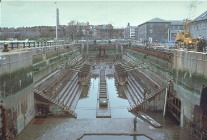 |
| To get to Bunker Hill, go back to the Visitor Center, pick up the Freedom Trail, cross the street and climb three blocks. The hill even today offers great views of Boston and the surrounding area. That was the reason both sides wanted it in 1775. After the events of April, the Colonials surrounded Boston while the British held the city. The city was vulnerable to invasion from either the harbor or Charlestown. Whoever controlled Bunker and Breeds Hill could launch or block such an invasion. The British were planning to do so, and as usual their movements were reported to the Colonials. | 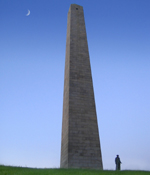 |
On June 16 1200 Colonials arrived at dark, dug trenches, and built fences. At dawn, the British were delayed by low tide, giving the Colonials more time. When the British attack came, the Colonials were ready. The British needed three assaults to capture the two hills. They lost 1034 of their 2200 men and had their confidence badly shaken. The Colonials learned that they could fight on even terms with the world's greatest army. But their success had been due to individual heroics. They realized they needed a leader who understood modern military strategy. And he was on the way. Two weeks later George Washington arrived in Cambridge to take over. |
|
|||
|